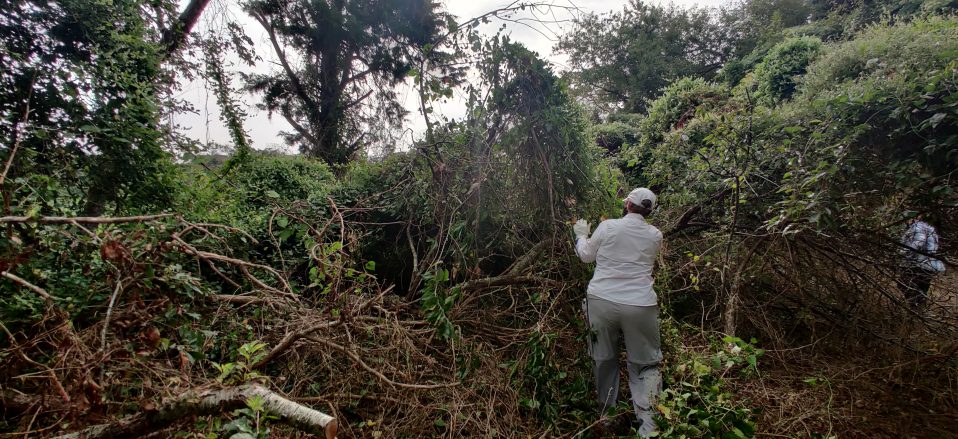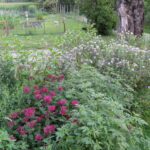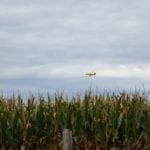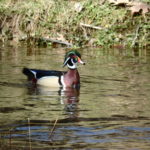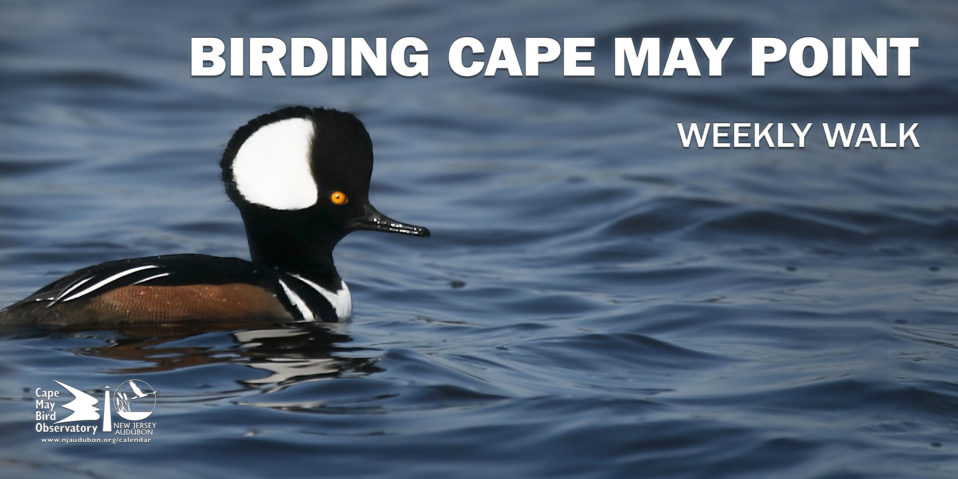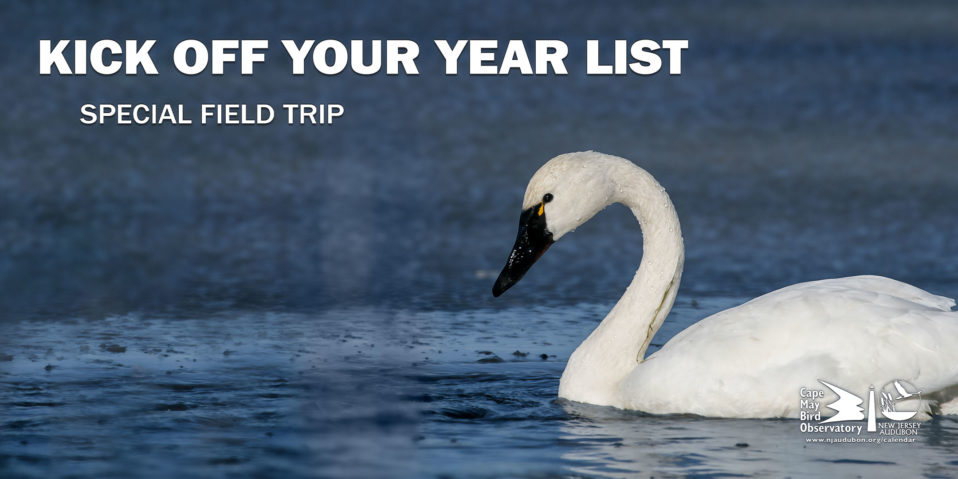Cape May is a place with many titles, a community known for its pristine beaches, history, beautiful architecture, and diverse offerings of food and drink. To others, the Cape May air carries a special mystique, an excitement that becomes fully apparent during the spring and fall when hordes of birds offer a close yet fleeting look at the spectacle of migration.
To these nature-enthusiasts, Cape May is not just a collection of beautiful places, but a collection of the incredibly stunning and diverse life that is showcased here year-round. This fact attracts a large amount of people, most of them seeking a connection with birds, but many are just as interested in the insects, herps, and plants seen along the Cape May Peninsula. Although we often separate biology into distinct sections, all this life is connected and depends on one another to survive and thrive.
This connectiveness is an important concept to grasp when thinking about the conservation of the wildlife we love. The quantity and quality of the habitat on the Cape May Peninsula is critically important for wildlife as this dictates how well they can forage, raise young, and can even affect how well they do during migration. This important connection is why New Jersey Audubon manages and restores habitat within Cape May County.
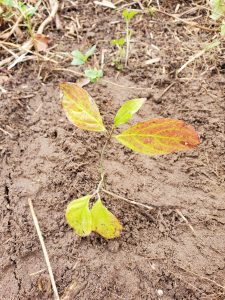
Newly planted Flowering Dogwood awaiting its tree tube.
This is important work and there is no shortage of it, in fact Cape May has the highest diversity of non-native invasive plants of any county in New Jersey. These aggressive species often outcompete beneficial native plants that wildlife rely upon. This reduces the amount of quality forage and cover for wildlife and degrades the health of the habitat. The combination of large areas to manage and highly degraded areas make restoration particularly challenging for New Jersey Audubon’s southern Stewardship team. Recently, committed volunteers have increased the restoration potential by giving their time and energy to help with important conservation projects in the county.
Two recent volunteer events personify the important work we do and how it can be connected and made better by community engagement. The first event was located in Cape May Point State Park and was a joint effort between New Jersey Audubon, Cape May Point State Park Staff, and volunteers. Volunteers received a briefing on the plan of action and targeted a small area that contained native trees that would eventually die from the invasive vines trailing up them. Volunteers worked hard cutting and pulling invasive plants for hours, ultimately removing several large dump truck loads of invasive plants.
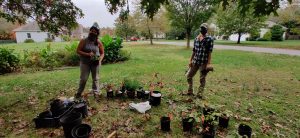
Organizing Lynn’s plants which were dug up from special section in her yard.
This area and others in the park were targeted in another volunteering event focused on planting areas where invasive pressure was low. Most of the plantings were donated by a local resident who had a large number of saplings regenerating on her property. These plants were carefully extracted and picked to ensure their root masses were intact. The restoration project at Cape May Point State Park is unique as it requires all plant material to be local and sourced from the county to ensure genetic hardiness and connectiveness.
The planting process first involved finding ideal spots for new trees and shrubs, areas that were open enough for a tree to grow into them or areas where shrubs could still thrive beneath established trees. Then volunteers cleared debris around the planting area, planted the tree or shrub, and protected it with tree tubes to protect from deer browse.
All in all, 116 plants were planted in a short span of a few hours. The plantings included Flowering Dogwood (Cornus florida), Black Cherry (Prunus serotina), American Holly (Ilex opaca), Hackberry (Celtis occidentalis), American Persimmon (Diospyros virginiana), Willow Oak (Quercus phellos), Southern Red Oak (Quercus falcata), Sweet Gum (Liquidambar styraciflua), Pignut Hickory (Carya glabra), and Wax Myrtle (Morella cerifera).

Volunteers removing a tangle of vines from native trees.
All of the species we choose to plant in the restoration area are carefully considered to make sure they fit into the local forest ecosystem. Oftentimes one of the best ways to see if the plant will fit in is to see if it is already actively growing in and around the area!
These volunteer events mirror usual rhythm of restoration work. Which begin with managing the factors that negatively impact the habitat, in this case invasive plants which push out native plants and reduce the amount of resources available to wildlife. This is usually followed up with plantings that serve as a supplement to help boost natural regeneration and diversity so that the site can quickly bounce back to a healthy state. As habitat patches become healthier and natives begin to thrive once more, invasive plants have a harder time establishing themselves, which reduces the amount of management that is required while maximizing the benefits of the restored habitat. In the future, we seek to increase community engagement with these important restoration projects.
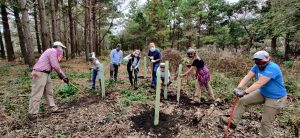
Power Planters!
If you are interested in volunteering and contributing your time to this effort, please contact Steven Garcia at steven.garcia@njaudubon.org !




